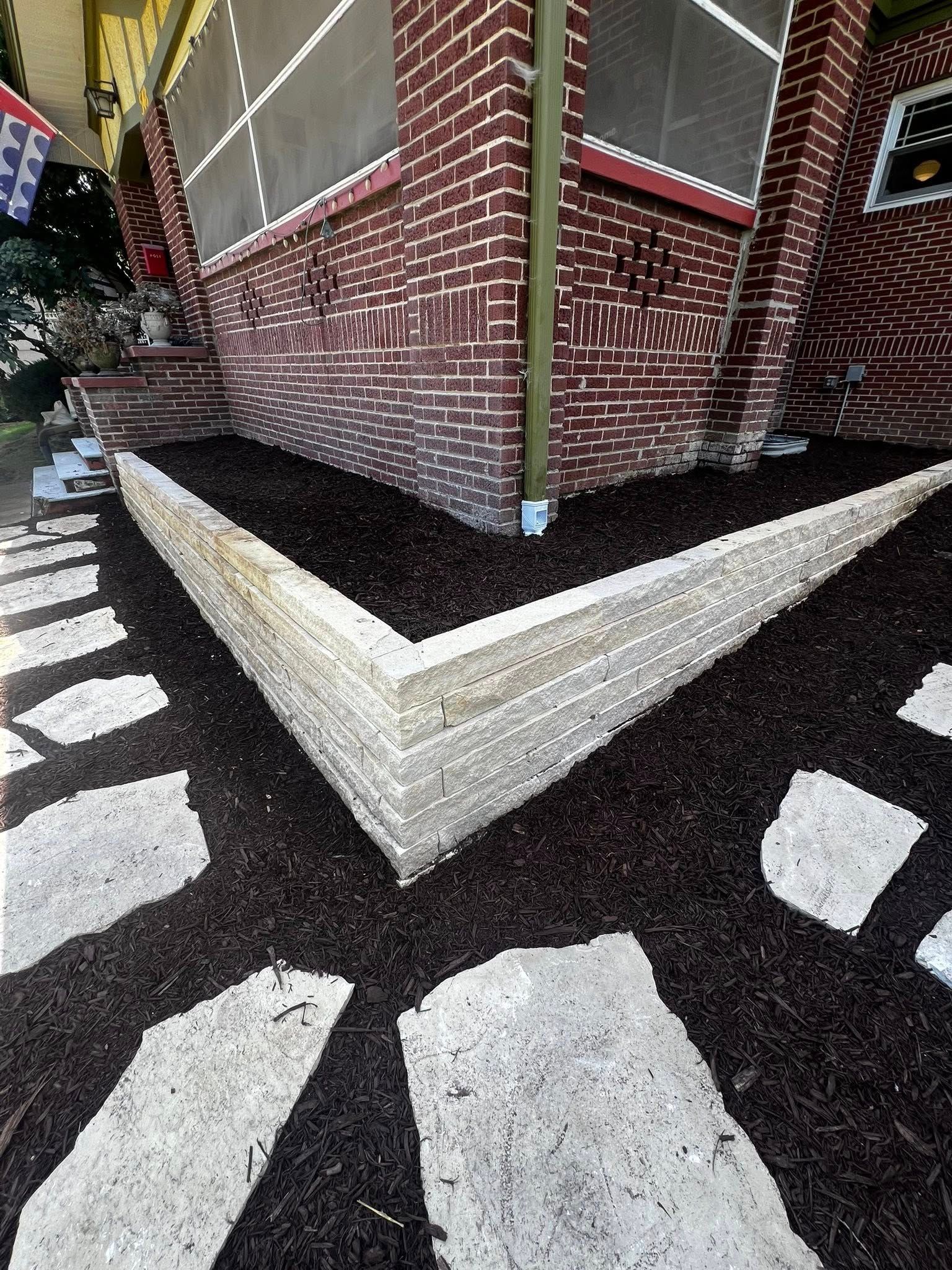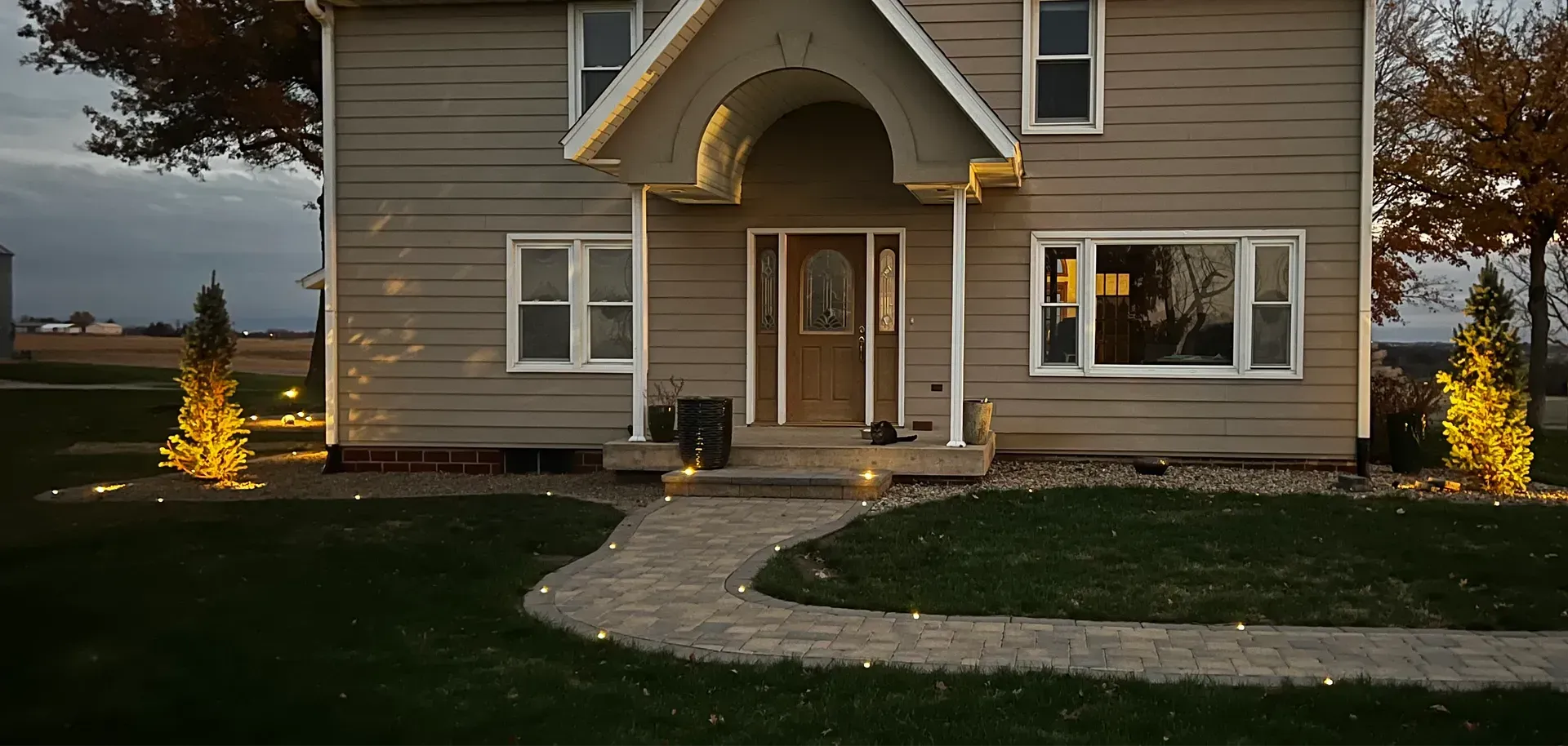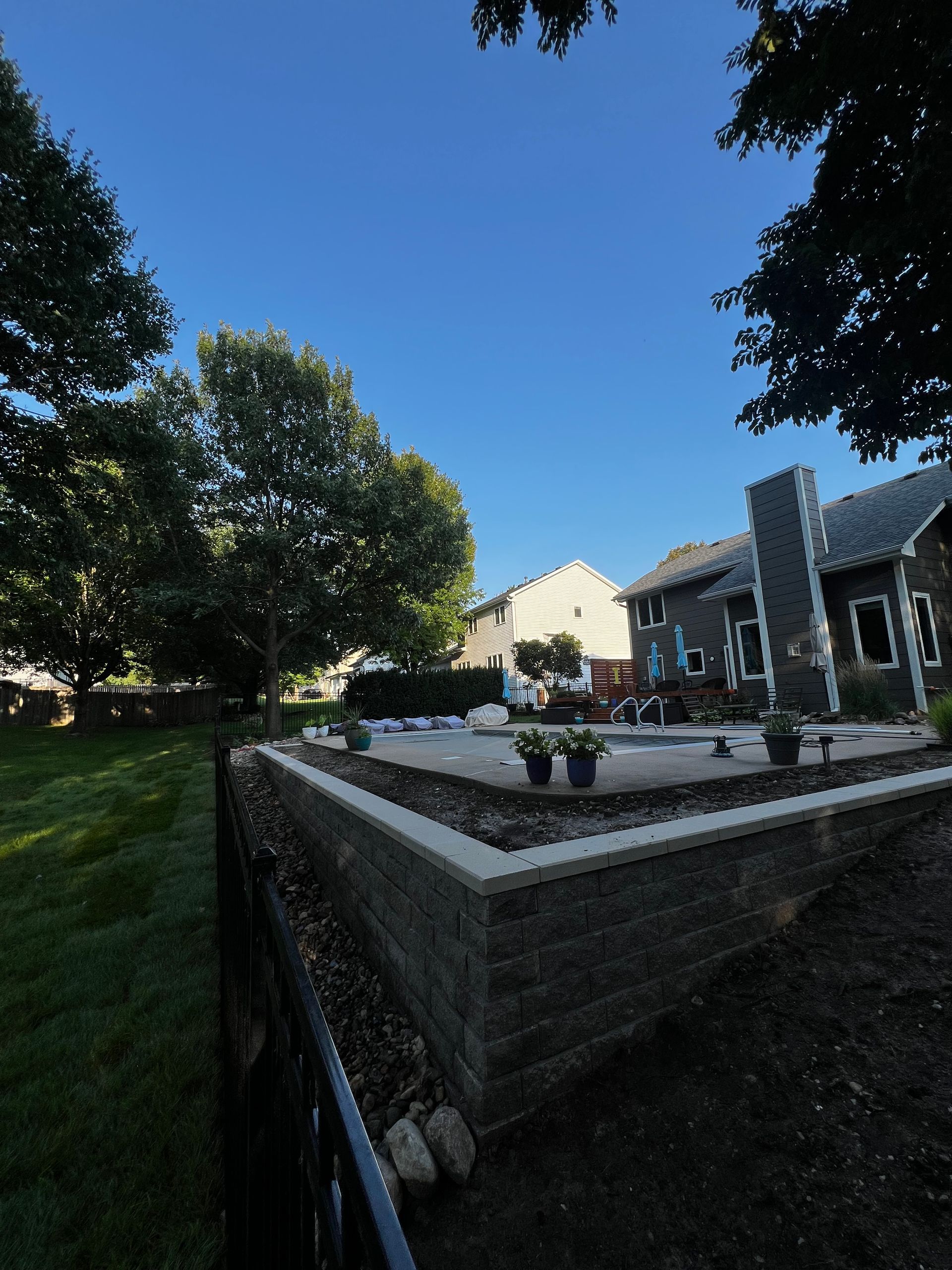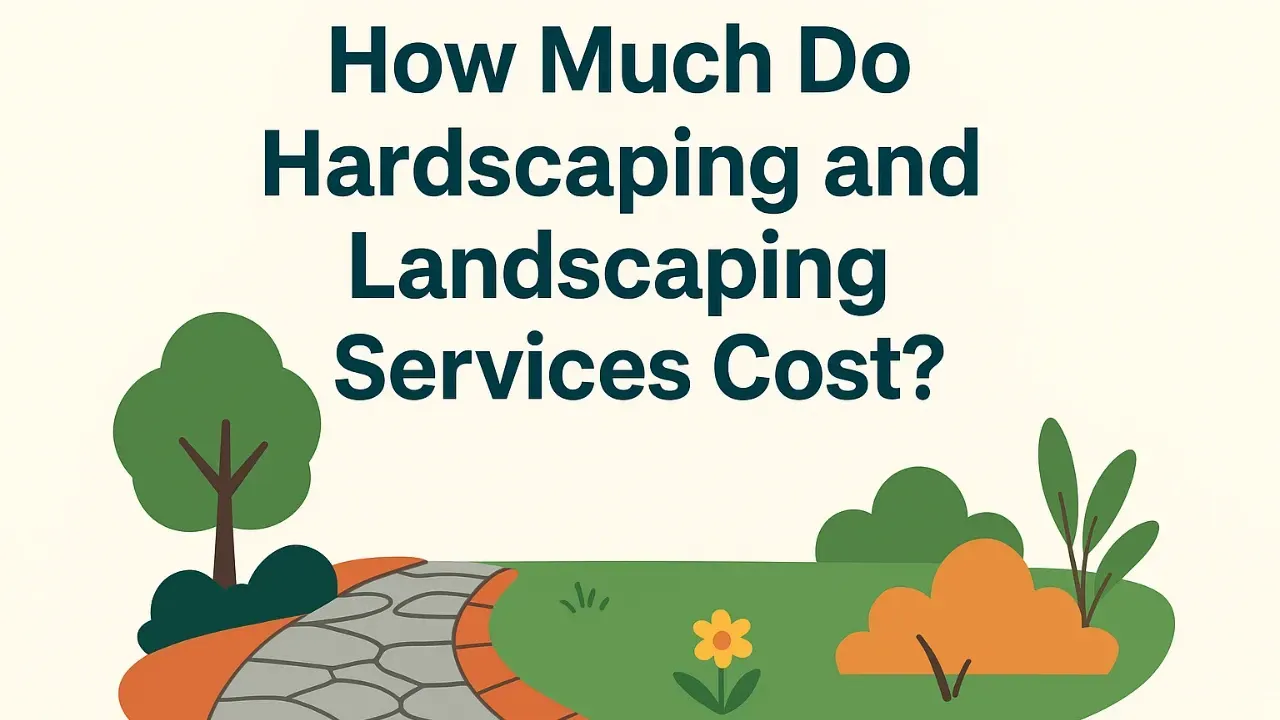Creating Sustainable Garden Designs for Residential Spaces
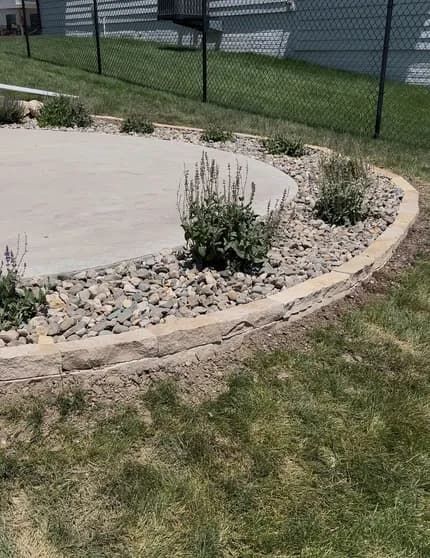
Sustainable Garden Design for Your Lowa Home
A lovely garden may do more than simply making your home look better from the street; it can also be a thriving ecosystem that works well with Iowa's climate. When you create a sustainable garden, you make outdoor places that are beautiful, long-lasting, use fewer resources, and help local species. It's a sensible way to lower maintenance, save water, and make your yard healthier for your family to enjoy for years to come.
We at Larkin Landscape & Design think that a wonderful garden is one that looks good and is good for the environment. This article will teach you the basic rules of designing a sustainable garden and give you useful advice on how to make an eco-friendly sanctuary in Central Iowa. We'll talk about everything from picking the correct plants to using water intelligently. This will help you make a landscape that is both beautiful and long-lasting.
Sustainable Garden Design for Your Lowa Home
A lovely garden may do more than simply making your home look better from the street; it can also be a thriving ecosystem that works well with Iowa's climate. When you create a sustainable garden, you make outdoor places that are beautiful, long-lasting, use fewer resources, and help local species. It's a sensible way to lower maintenance, save water, and make your yard healthier for your family to enjoy for years to come.
We at Larkin Landscape & Design think that a wonderful garden is one that looks good and is good for the environment. This article will teach you the basic rules of designing a sustainable garden and give you useful advice on how to make an eco-friendly sanctuary in Central Iowa. We'll talk about everything from picking the correct plants to using water intelligently. This will help you make a landscape that is both beautiful and long-lasting.
What is the Design of a Sustainable Garden?
Sustainable garden design is a kind of landscaping that copies how nature works. A sustainable garden is made so that it mostly takes care of itself, so you don't have to fight nature by watering, fertilizing, and controlling pests all the time. The aim is to create a balanced ecosystem that can self-maintain, conserve resources, reduce waste, and promote biodiversity.
The Benefits Go Well Beyond Just "Being Green"
Less Work
A garden that is meant to be sustainable needs less mowing, watering, and chemical use, which gives you more time to enjoy your place.
Lower Costs
Saving water, not using chemical fertilizers and pesticides, and having less lawn space all help you save a lot of money in the long run.
More Resilient
Gardens that use native and climate-appropriate plants are better able to deal with Iowa's extreme weather changes, like summer droughts and hard winter freezes.
A healthier environment
You make the area safer for kids and dogs by not using synthetic chemicals. You also assist in keeping chemicals from running off into nearby rivers.
Help for Animals
A sustainable garden gives pollinators like bees and butterflies, songbirds, and other helpful animals the food and shelter they need to live.
The Key to Lowa Gardening: Right Plant, Right Place
Choosing plants that naturally fit into our surroundings is the most fundamental rule of sustainable gardening. In Central Iowa, this means picking plants that can grow well in our clay-heavy soils, deal with our hot, humid summers and cold, snowy winters, and handle our variable rain patterns.
Love Lowa Native Plants
The best thing about the native plants in a garden is that they are beneficial for the environment. They have changed over thousands of years to do well in our area. This implies that once they are established, they don't need a lot of water, don't need artificial fertilizers to grow, and are naturally resistant to local pests and illnesses. By planting native plants, you are also restoring part of Iowa's natural heritage and giving local pollinators and species that have evolved with them a much-needed food supply.
Great Native Plants for Gardens in Central Lowa
The Purple Coneflower (Echinacea purpurea), the Black-Eyed Susan (Rudbeckia hirta), the Butterfly Milkweed (Asclepias tuberosa), and the Prairie Blazing Star (Liatris pycnostachya) are all good for sunny spots. For shady spots, try Wild Geranium (Geranium maculatum), Jacob's Ladder (Polemonium reptans), or Wild Ginger (Asarum canadense). Little Bluestem (Schizachyrium scoparium) and Pasque Flower (Pulsatilla nuttalliana) are two stars that can handle drought.
Think About Cultivars (human-bred plants) and Nativars (naturally bred plants)
Native species are great, but you don't have to stick to them. A lot of "nativars," or cultivars of native plants, have been grown to have certain properties, including being smaller or having various bloom colors, while keeping a lot of the resilient, low-maintenance traits of their wild cousins. Finding plants that thrive in your area's light, soil, and moisture conditions is key.
Smart Ways to Landscape with Water
Water is a valuable resource, and a garden that lasts uses it wisely. The idea is to cut down on the amount of extra watering you have to do with your hose or irrigation system.
Make Your Lawn Smaller
The typical turfgrass lawn is one of the features of a home landscape that uses the most water. You may save a lot of water, time, and fertilizer by carefully making your grass smaller. Think about putting in large garden beds with native grasses and perennials in place of parts of your lawn.Creeping thyme is an easy-to-care-for groundcover functional hardscaping includes things like a paver patio or a gravel path.
Put Plants Together Based on How Much Water They Need
Hydrozoning is a simple yet effective way to do this. Put plants that need a lot of water together and plants that like dry circumstances in a different location. This technique lets you water more effectively by selectively giving moisture to the parts of the garden that really need it instead of soaking the whole thing evenly.
Make Soil Healthy
A garden that uses water wisely needs healthy soil. When it rains, soil with a lot of organic matter acts like a sponge, soaking up water and retaining it for plants to use later. Adding compost to Lowa's thick clay soil can make improve it compost loosens the soil, makes it easier for water to drain, and slowly releases important nutrients, so you don't need to use synthetic fertilizers.
Another important step is to put a 2- to 3-inch layer of organic mulch, like shredded bark or wood chips, over your vegetable beds. Mulch keeps the soil moist, prevents weeds from growing, and keeps the temperature of the soil stable, which protects plant roots from excessive heat and cold.
Making a Safe Place for Wildlife and Pollinators
A garden that is good for the environment is full of life. You can make your yard a great home for bees, butterflies, birds, and other helpful animals by making a few smart choices.
Plant for Blooms All Year
Choose a range of plants that will bloom from early spring to late October to help pollinators all year long. Wild Columbine, Golden Alexanders, and Pasque Flower bloom in the spring. Summer: Coneflowers, Bergamot (Bee Balm), and Milkweeds. Asters, goldenrods, and Joe-Pye weed bloom in the fall. Milkweed is a good host plant for Monarchs, and fennel or dill is a good host plant for Black Swallowtails.
Give Them Water and a Place to Stay
A modest dish of water with some stones for insects to land on or a simple birdbath can save wildlife during hot, dry seasons. Letting some portions of your garden get a little "messy" can also give important shelter. Insects can find shelter in a small brush pile, a stump, or by leaving seed heads on perennials over the winter. Birds can also eat these things.
Adding Sustainable Hardscaping
Hardscaping, which includes patios, walkways, and retaining walls, is an important part of a sustainable design.
Pick Surfaces That Let Water Through
Rainwater can't soak into the ground when it falls on traditional concrete or asphalt surfaces. This makes more runoff, which can damage nearby waterways. Water can flow through permeable pavers, gravel paths, or spaced flagstones set in sand, which helps recharge the groundwater. This processes down on runoff, slows down erosion, and helps keep your environment organically moist.
Use Materials That Are Local and Have Been Used Before
Getting resources from nearby places, such as stone from Iowa quarries, cuts down on the carbon footprint of shipping. Another great method to cut down on waste and give your garden a unique look is to use recovered or recycled materials, such as crushed concrete for a walkway base or salvaged bricks for a garden edging.
Your Environment-Friendly Lowa Garden Is Waiting for You
Building a garden that lasts is a fun project that helps you, your community, and the environment. It's about making sensible, well-informed decisions that lead to an outdoor environment that is beautiful, strong, and easy to care for. You may create a beautiful garden that fits in well with our Central Iowa home by using native plants, saving water, and building healthy soil.
Are you ready to turn your yard into a beautiful, eco-friendly place? The people at Larkin Landscape & Design know the area well enough to help you plan and develop an eco-friendly garden that fulfills your needs and goes above and beyond what you expect. Get in touch with us today to get started.
Recent Blogs




